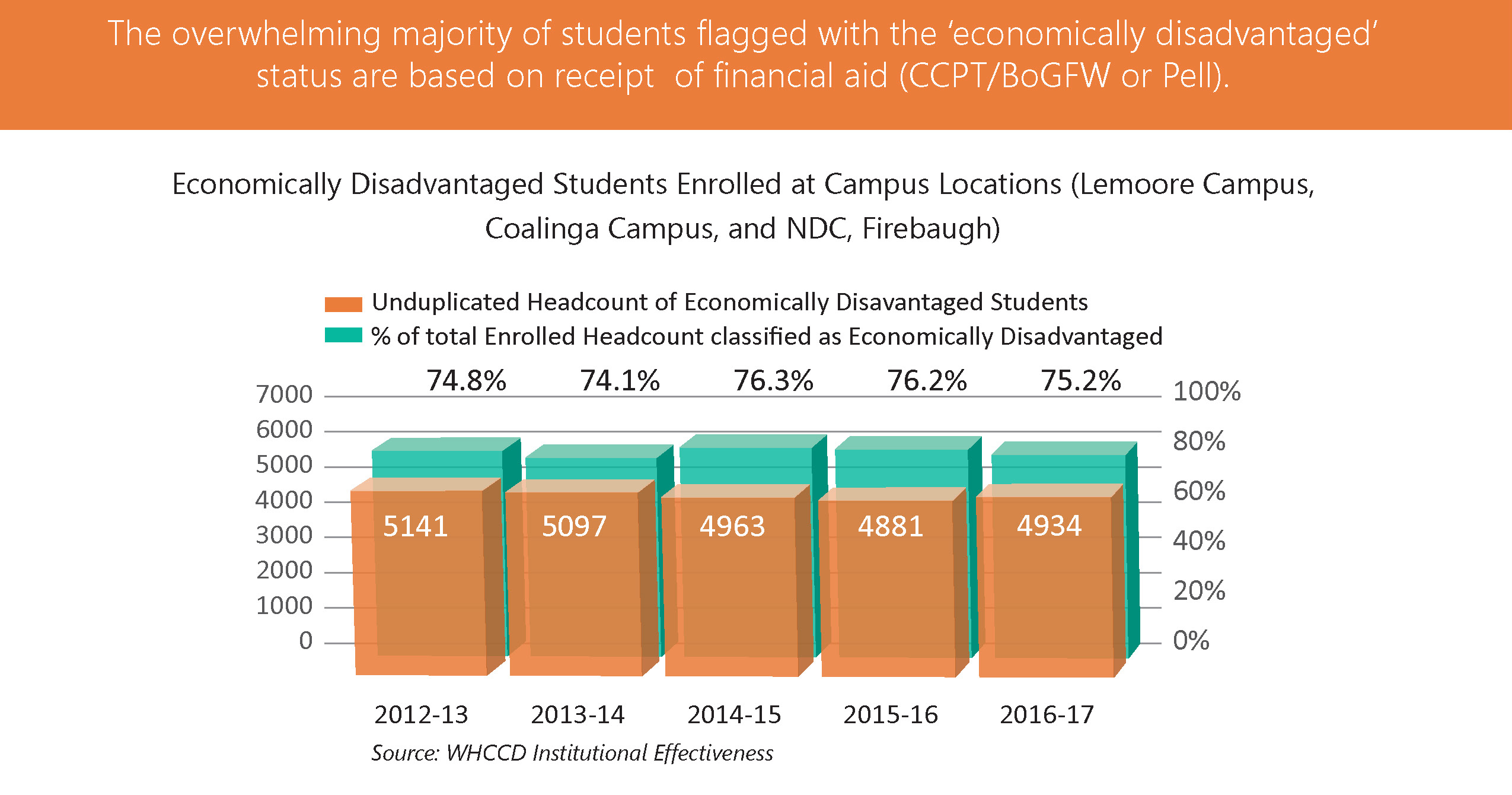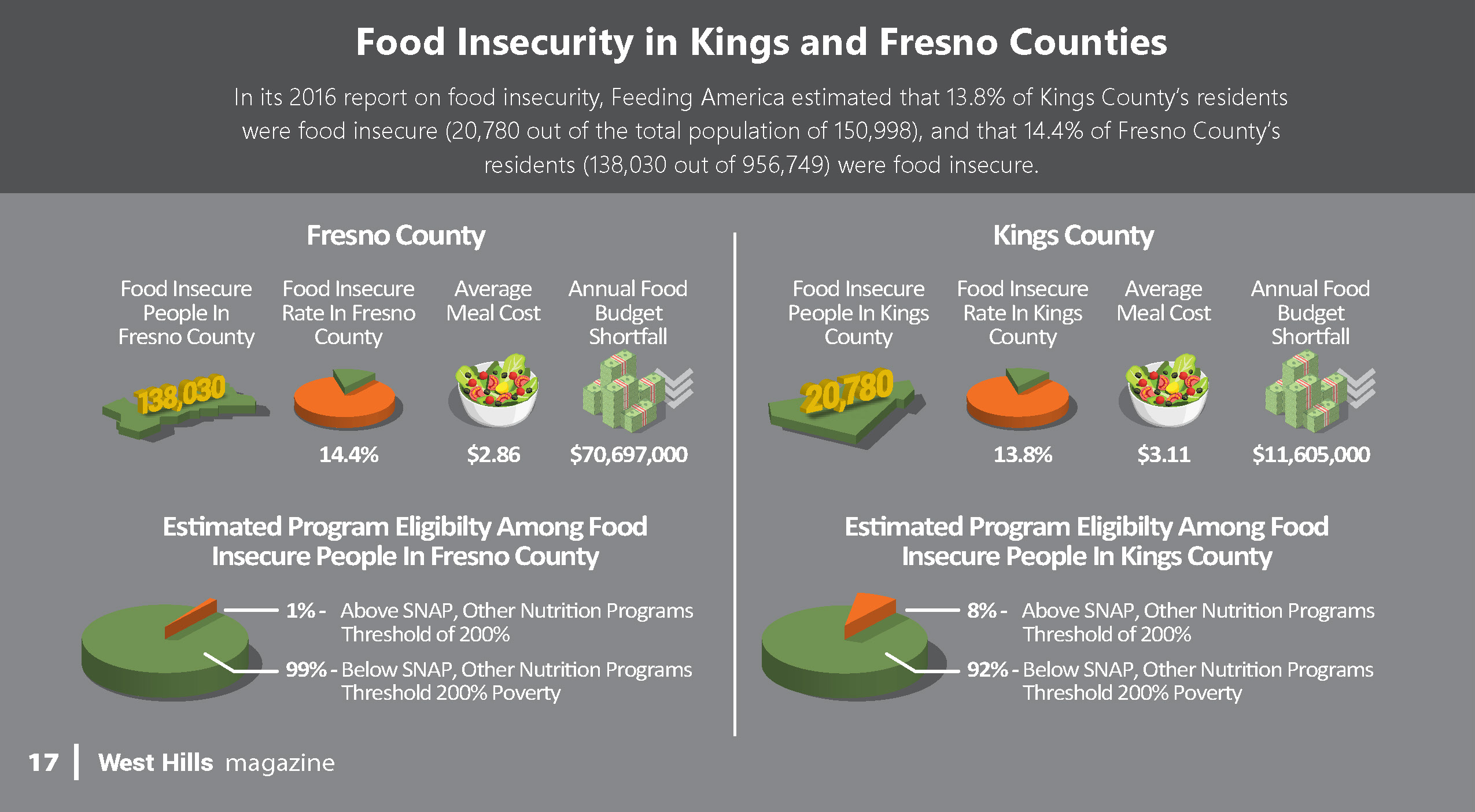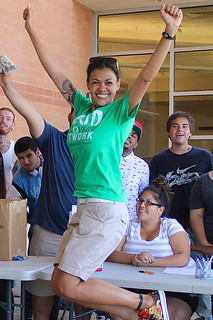At West Hills College Lemoore and West Hills College Coalinga, student success is a priority and that means making sure student needs are met.
Food Insecurity Faced by WHCCD Students and Communities
WHCCD Office of Accreditation, Research, Institutional Effectiveness, and Planning
During the past six academic years, approximately 75% of students attending classes on Coalinga Campus, Lemoore Campus, and at North District Center, Firebaugh have fallen into the category of “economically disadvantaged” based on criteria defined by the California Community Colleges Chancellor’s Office. These criteria include the following:
- Financial Aid California College Promise Grant (“CCPT”; formerly BoG Fee Waiver) and Pell award recipients
- CalWORKs participation
- Self-reported status on student VTEA survey
The overwhelming majority of students flagged with the ‘economically disadvantaged’ status are based on receipt of financial aid (CCPT/BoGFW or Pell).


Eagle Pantry Tackles Food Insecurity, One Student at a Time
West Hills College Lemoore student Michael Dey knows hunger; he knows it intimately. He knows what it’s like to come back to a house void of anything to eat. He knows what it’s like to scavenge for wasted food in garbage cans and recyclables, the cast offs of those who don’t know hunger as well as he did. He knows what it’s like to go without because he’s lived with food insecurity, lived with not knowing where his next meal would come from.
That’s why West Hills College Lemoore’s Eagle Pantry, a student founded and student run food bank and food distribution club, is so important to Michael Dey and his fellow Pantry organizers. WHCL’s Eagle Pantry hosts food distributions for students twice a week on Tuesdays and Thursdays, often attracting dozens of students who pick up everything from fresh bread to a simple bagel.
According to a report by the West Hills Community College District Office of Accreditation, Research, Institutional Effectiveness, and Planning, approximately 73% of students attending classes at WHCL fall into the category of “economically disadvantaged” based on criteria defined by the California Community Colleges Chancellor’s Office. An estimated 13.8% of Kings County’s residents were food insecure according to a 2016 report from Feeding America.
For Dey, the Eagle Pantry is one way to try to help students focus on being students, instead of focusing on food insecurity and economic issues they might be facing. Dey, who at one point was homeless and living in an abandoned house, was still experiencing food insecurity when he began attending WHCL. He credits that time of his life with his motivation to help his fellow students.
“We’re really fortunate in our society that most of us don’t know what it’s really like to be hungry,” Dey said. “For those of us who have, it’s hard to be productive, to do day to day stuff, when you don’t know where your next meal is coming from. If students aren’t hungry, then they’re much more likely to be successful students. I’ve been really blessed that as a result of my time as a student at WHCL, my personal level of food insecurity has decreased.”
The Pantry started in 2013, inspired by concern over food waste in the community. In fact, the community has continued to play a big part in the club. The forging of community partnerships has led to part of the Pantry’s success. Much of what the Pantry distributes is donated weekly by Panera Bread of Visalia, including leftovers from the day’s sales that might otherwise go to waste. The club also hosts donation drives on campus. The Pantry partners with local schools as well: Lemoore Middle College High School students assist at the Tuesday and Thursday Eagle Pantry distributions as part of a service learning project.
The Pantry has also started expanding what it can offer, again through community partnerships. Through the effort of the club, WHCL now hosts a monthly Community Food Bank Distribution. The distribution is open to the community in addition to students.
According to Dey, the Community Food Bank distributions—which started being hosted on the WHCL campus in October—have served over 200 local families.
The students who are passionate about Eagle Pantry aren’t just stopping here. Next on their radar is the possibility of establishing a physical food pantry on campus, a permanent home for the Eagle Pantry.
“Knowing you’ve helped to save good food from going to waste and putting a smile on someone’s face, the feeling is unexplainable,” said Eagle Pantry President Topacio (Topaz) Tamayo. “We want families, faculty and our peers to have a happy stomach and tackle each day with the energy and motivation they need to achieve their goals.”
At West Hills College Coalinga, a focus on tackling food insecurity is also on the rise. WHCC is planning to start its own food pantry and to form community partnerships as part of that effort.
At West Hills, the simple act of keeping students and the community fed is a priority and, with these two initiatives, that effort is finding a home.
View pictures of the Eagle Pantry, past and present:

